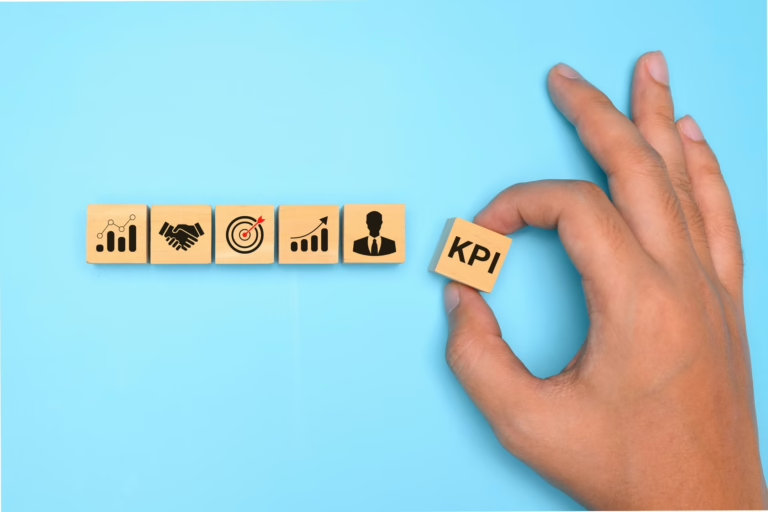Customer satisfaction is an essential growth lever. Call centers play a key role in this dynamic. But how can we measure the real impact of these services on brand loyalty and reputation? What are the improvement levers to transform call centers into real growth engines?
Various elements are necessary to achieve this goal, such as available technology (such as a successful call center solution), individual agent skills, and overall call center training and management practices. The success of a call center depends on an optimal combination of adapted technology, human skills and rigorous management methods.
To evaluate the effectiveness of your call center and identify areas for improvement, it is essential to closely monitor certain key performance indicators (KPIs) for your call center. Nixxis presents the list of the 10 most important KPIs for a call center in 2024.
1. Agent occupancy rate
Busy rate indicates how much of an agent’s working time is spent directly interacting with customers, whether through phone conversations, online chats, or other types of interactions. This KPI is a key element for call center managers, because it makes it possible to evaluate the efficiency of teams and optimize the use of resources. An occupancy rate that is too low can lead to a drop in motivation among agents, while a rate that is too high can generate stress and harm the quality of service. A balance between workload and break times is necessary and strongly contributes to the sustainability of the call center activity in the long term.
2. First Call resolution rate
The first call resolution rate reflects the quality of customer service by evaluating the number of problems definitively resolved upon first contact. Resolving issues at first contact avoids follow-up calls, call transfers, and other follow-up actions that can be time-consuming and frustrating for customers. A high rate strengthens the company’s brand image by demonstrating its commitment to providing superior customer service.
3. Quality of service rate
The quality of service rate measures the proportion of calls answered within a target time (expressed in seconds), which reflects the ability of the service to respond quickly to customer requests. This ratio is obtained by applying the following formula: (Number of calls answered within the deadline / Total number of calls) x 100. Let’s take an example: out of 180 calls, 162 are processed within the normal time, i.e. a rate of service of (162/180) x 100 = 90%. A high percentage means your agents are very efficient and respond quickly to customer inquiries, which contributes to a great customer experience. This rate also makes it possible to detect whether the tools and IT systems used by agents are adapted to handle calls in the best possible way.
To improve this KPI, it may be relevant to hire new advisors, review call procedures or invest in suitable telephony software.
4. Average Handling Time (AHT)
AHT encompasses not only the duration of the conversation with the customer, but also the time spent on post-call tasks, such as updating information in the CRM or handling specific requests. For example, after hanging up, an agent may need to update the customer file, send a confirmation email, or schedule a call back, which increases the total call handling time. AHT is a strategic metric for call centers because it helps measure process efficiency and optimize operating costs. By reducing duration, agents can handle more calls in a given time, improving customer satisfaction and reducing operating costs.
5. Call Abandonment rate at the IVR level
It measures the rate of calls that are not answered because customers hang up before being connected to an advisor or an interactive voice response system. An effective IVR menu should be simple, intuitive, and able to direct customers to the right resources. If the abandonment rate is high, it suggests that the customer journey within the IVR is too complex or does not meet callers’ expectations, causing them to hang up.
6. Average Conversation Duration (ACD)
This KPI makes it possible to evaluate the average duration of interactions between advisors and clients, whether entering or exiting. Thanks to this data, it is then possible to identify the factors which influence the duration of calls and to implement corrective actions (training of agents, choice of another, more efficient software, etc.). If the average call duration is too high, it means that advisors are spending excessive time on each interaction, reducing their ability to handle a high volume of calls.
7. Call Abandonment rate
This rate reflects the level of frustration callers have when they are forced to wait too long to be answered. The higher it is, the more it indicates that wait times are excessive, which harms the customer experience and increases the risk of losing the customer permanently if no corrective action is taken. To retain and strengthen their trust, it is crucial to keep this rate as low as possible, reducing waiting times through effective management of your advisors.
8. After Call Work (ACW)
This KPI measures the time an agent spends completing necessary actions following a call, such as updating customer information, creating reports, or following up on next steps. The shorter this delay, the more agents will be available to respond to new requests and reduce caller wait times.
9. Overflow rate
It assesses the frequency and magnitude of situations where the number of incoming calls exceeds the agents’ ability to respond immediately, resulting in higher or lower wait times for customers. This indicator allows you to determine if the number of agents is adapted to the volume of calls received and if the waiting times are reasonable (see the abandonment rate above). To reduce waiting times, several strategies can be implemented: offering customers the possibility of scheduling a callback, directing them to less saturated contact channels or simply increasing the number of advisors.
10. Hold Duration
Average online wait time is the time from when a customer joins the queue to when they are connected to an advisor. Long wait times may be a sign that agents don’t have all the information they need to resolve issues quickly or that the tools at their disposal are inadequate to process requests efficiently.
11. Conclusion
By closely monitoring these KPIs for your call center or customer service, you can quickly identify the strengths and weaknesses of your teams, adjust your processes and optimize internal resources to improve customer satisfaction.
Some first tips to improve your call management:








